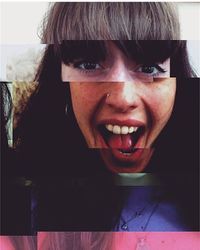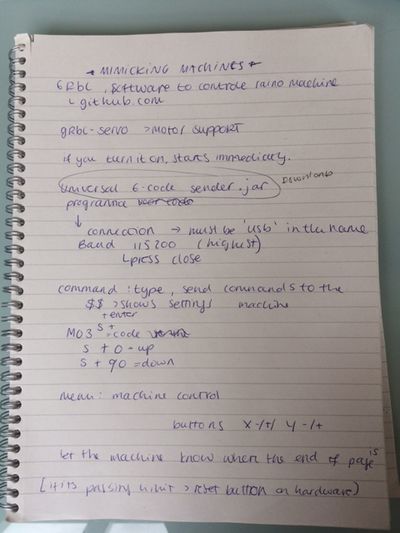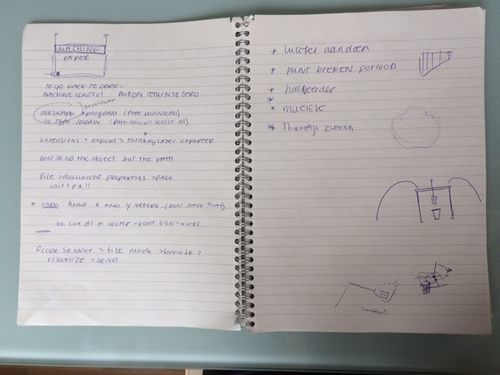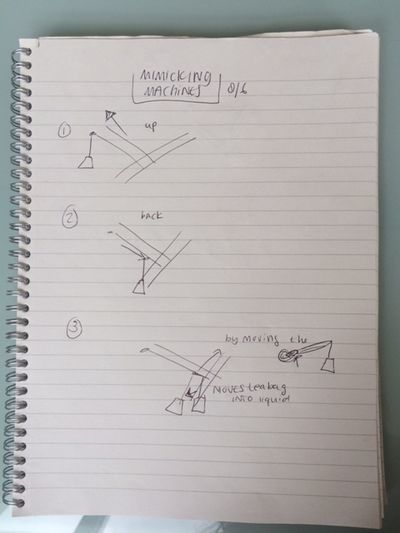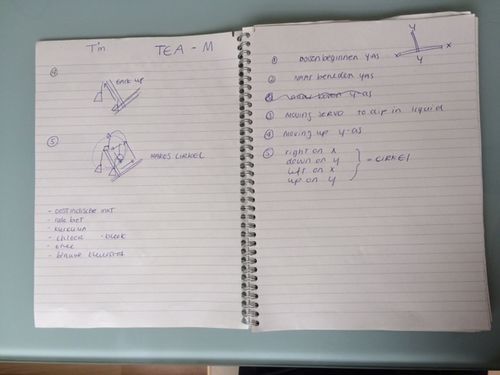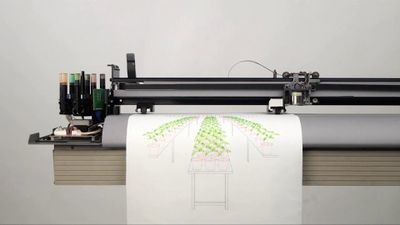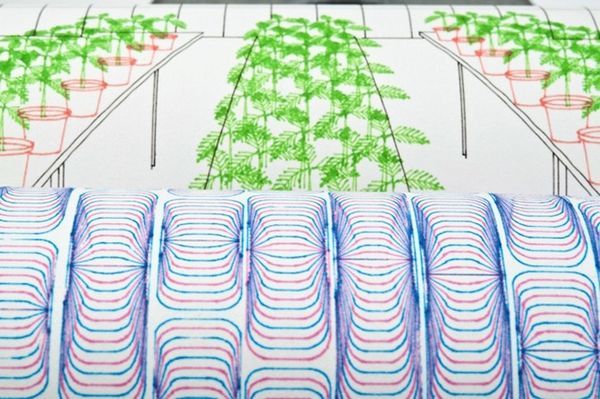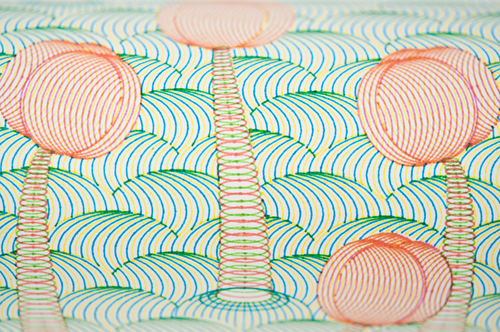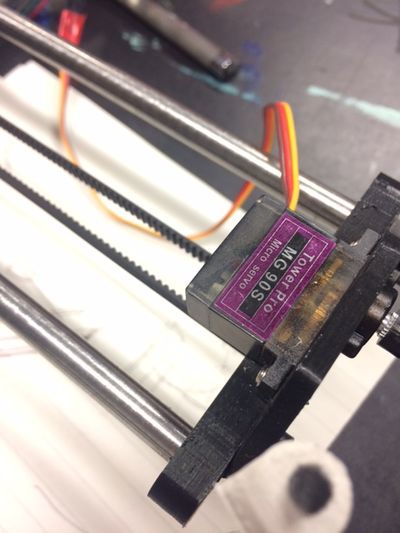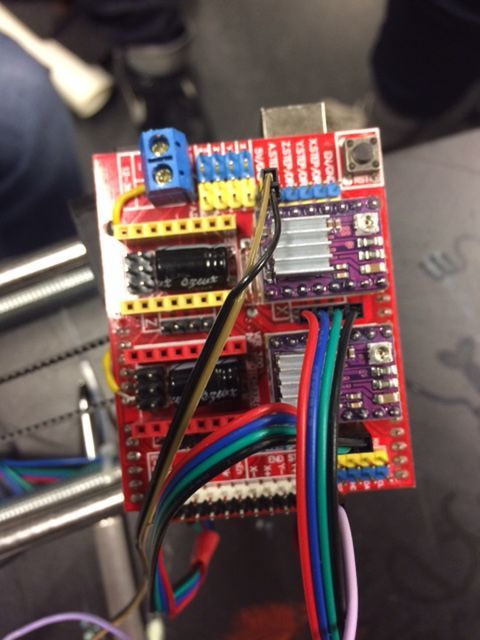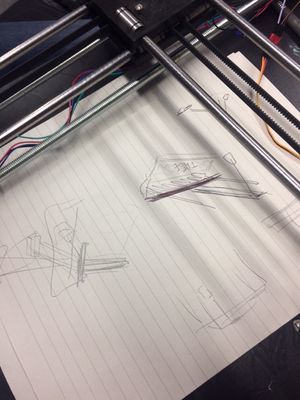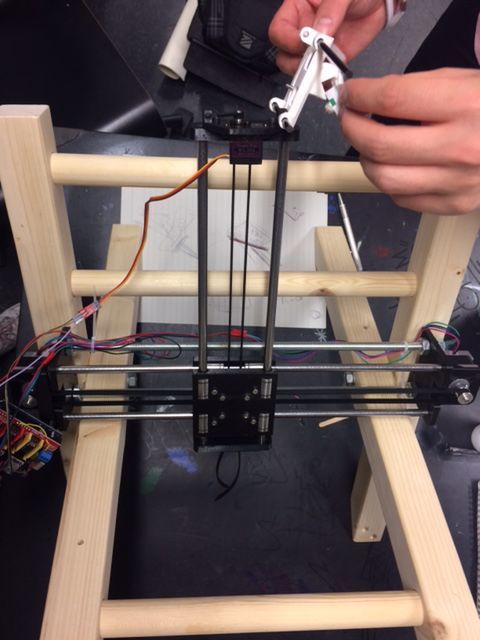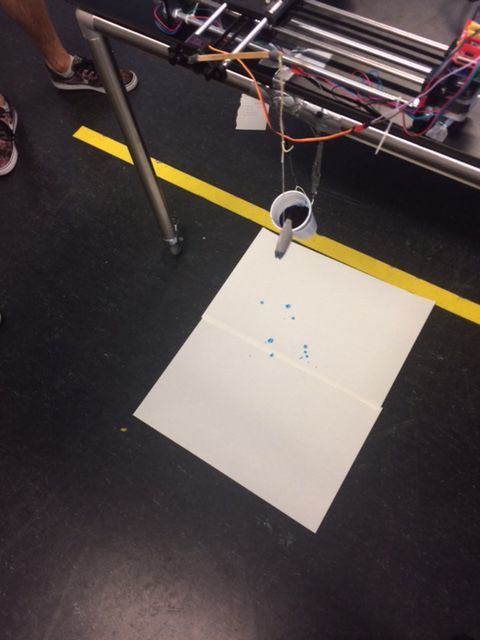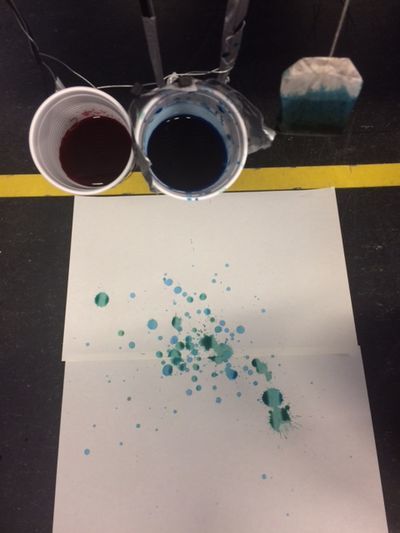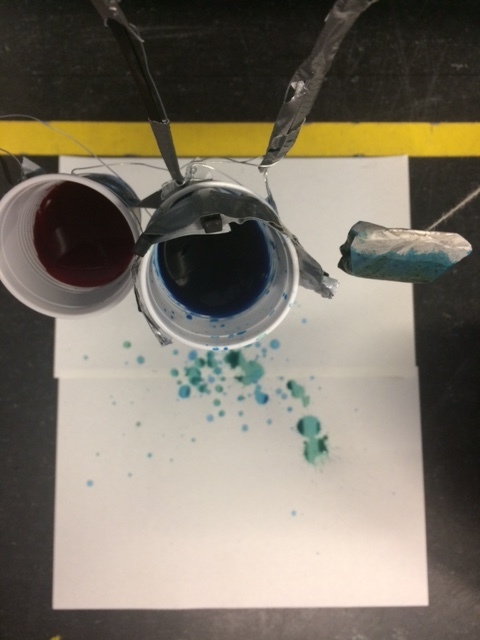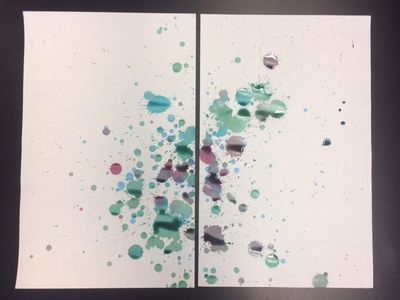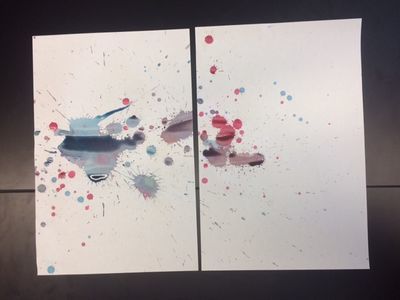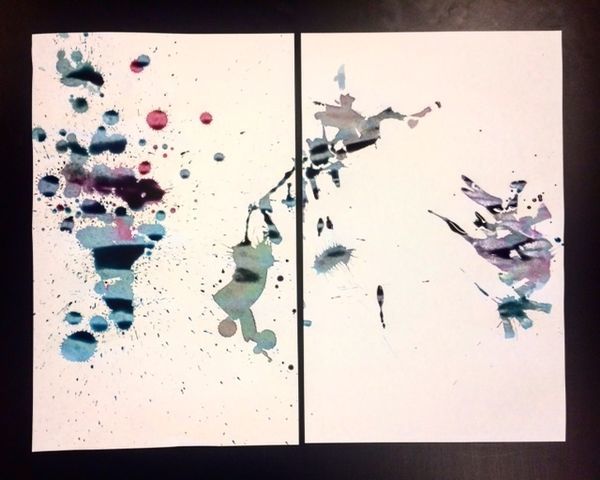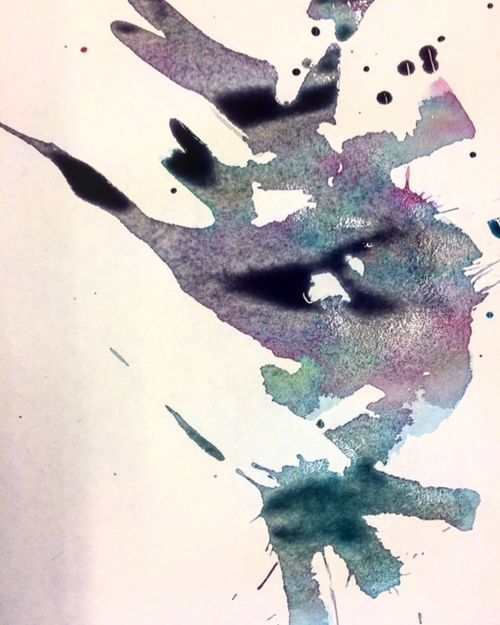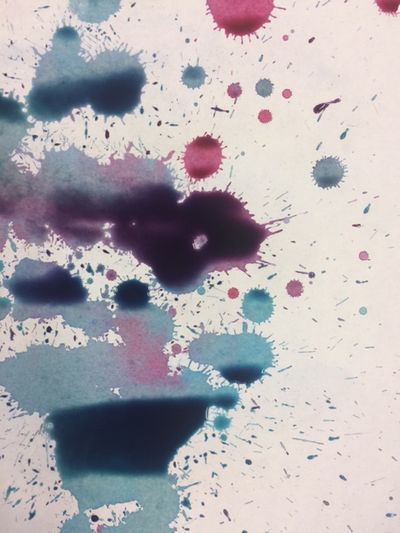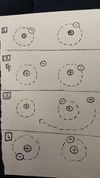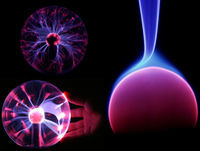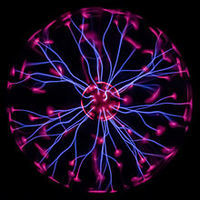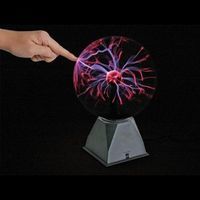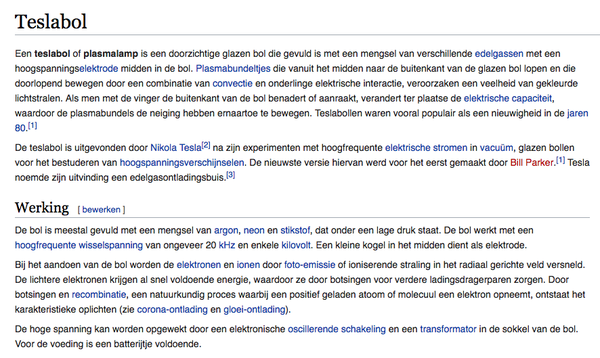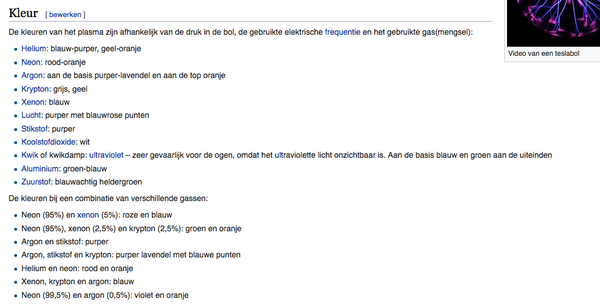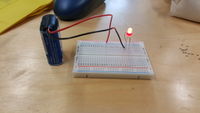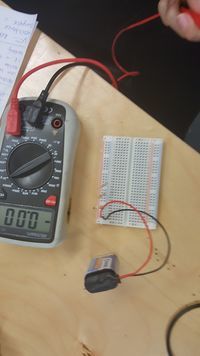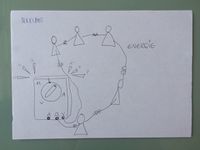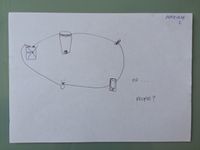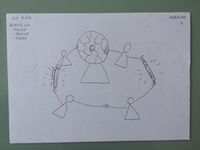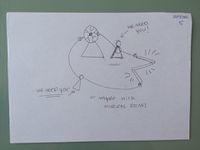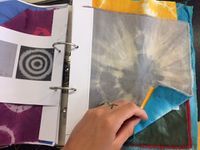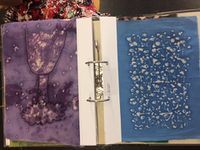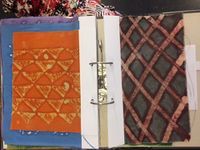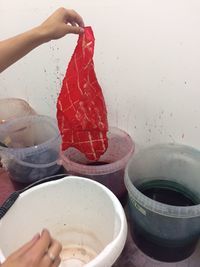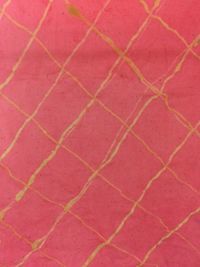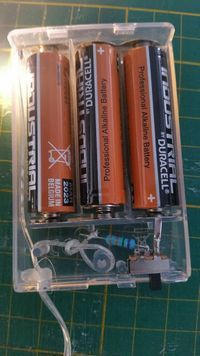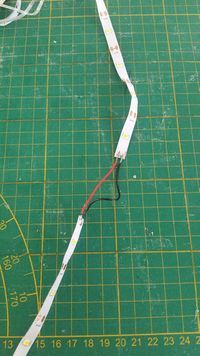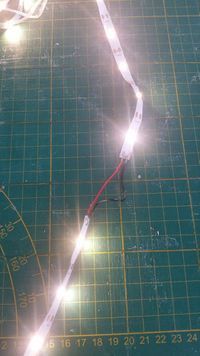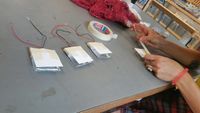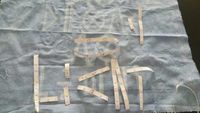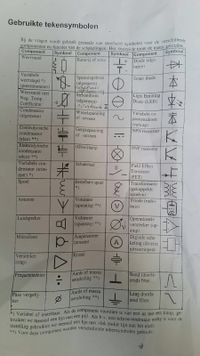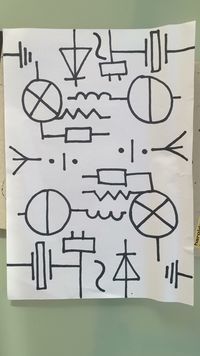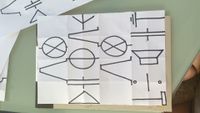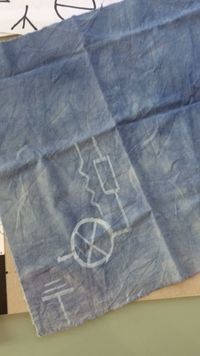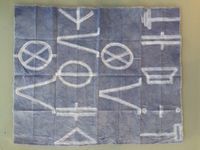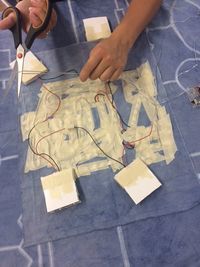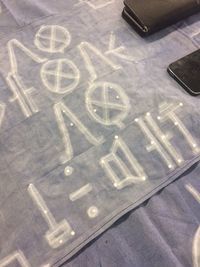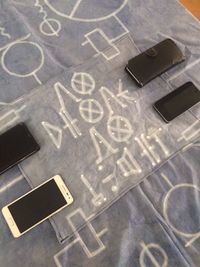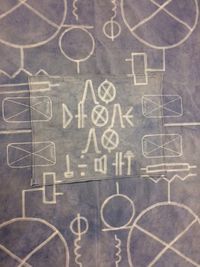Difference between revisions of "User:MXMVS"
| (85 intermediate revisions by 2 users not shown) | |||
| Line 8: | Line 8: | ||
| − | == ''' | + | |
| + | == '''Elective: Mimicking Machines''' == | ||
| + | |||
| + | |||
| + | The first class we spend on how to make a plotter. | ||
| + | We made groups to make each a part of the plotter, with a 3d printer. | ||
| + | |||
| + | In 2nd class we were thinking about what to do with the plotter. | ||
| + | First I thought about using the plotter as a drawer. I was inspired by the work of Rogier Arents. (see image below) He made a drawing with the plotter and while it was printing, he made a movie so it seemed like the images were alive. While discussing our ideas in class, i kinda find out that there is a lot more to do with the plotter. I wanted to explore this. | ||
| + | There were other people in class which also wanted to see what else you can do with a plotter. | ||
| + | |||
| + | We had to form groups out of our ideas. I formed a group with Roman, (and a few other people which only showed up once, so forgot about their names) | ||
| + | Our idea was to explore the machine by letting it do something else than drawing. We thought about using a teabag, wrapping it to the machine, let it dip in water, coffee or tea ;) and swing it around. | ||
| + | First steps to make is: how can we let the teabag swing? We had to make something like a square or a cirkel to make it move. Also the "dipping" part was interesting, how can we let the teabag dip, right in a cup? | ||
| + | Programming the machine plays an important role. We've never worked with a machine like this, neither with the coding of it. So, we had a lot to explore! | ||
| + | We started making drawings of how we wanted the teabag to move. Next step was programming the machine to do this. We made a drawing of a square in Inkskape, if we repeat the machine to make this square, it would move around right? The next thing we found out is that the machine is.... not so fast! So we had to speed it up. We also had to make the teabag dip. We could to that with the arm in the front. Funny thing is, when we tried this out, it was the opposite of slow, it dipped the teabag insanely fast! How to slow this down?! We had to be creative in how we could program the machine exactly the way we wanted it to move. | ||
| + | |||
| + | The idea was to swing the teabag around above a piece of paper. We decided to use ink instead of coffee/tea/water, so we had something nice as a visual as well. When we started with the teabag and ink (last class) we found out a few things. | ||
| + | |||
| + | |||
| + | 1. When the teabag starts dipping for the first time, is isnt wet enough to make something on paper, so we had to keep it in the ink a bit longer. If we let the arm dip, you program it from 100 (=up) to 0 (=down), that means it will go up and down super quick, without a break. So we had to add a few steps in between. Now the arm moves from 100(up) - 0(down), and from 0 - 20 - 40 - 60 - 80 - 100 back up, so it will go back up slowly. | ||
| + | |||
| + | 2. After a lot of dips, the teabag became much heavier, so the swing went a lot better. | ||
| + | |||
| + | 3. Because it was heavier, the square we were drawing was too much, it swung around so much so the ink was everywhere. | ||
| + | |||
| + | |||
| + | Because of this we decided to make add something to the square. Every corner of the square, the arm had to move down, so it will lose most of the ink, and it made a nice visual too! | ||
| + | So we did it! But we were not satisfied jet.. | ||
| + | We wanted to add another cup to dip in, so after the first swing, the teabag had to come back to the other cup (with different color) to dip in and make another round. | ||
| + | It wasn't easy because we had to be very precise. It worked once but because of the teabag went heavier, it dipped next to the cup, or accidently dipped in the other cup. But it was funny it worked once! | ||
| + | |||
| + | The nicest thing about the way we did this project, is that we've learned so much more about the machine than if we've let it just made a drawing. | ||
| + | With every step that turned out different than we had in mind, we had to change settings. So the whole experience of how to make a teabag move was super educational. I also like the fast that we used ink so we've got a nice visual of what we did with the teabag. What's also nice is that we started with blue ink, which turned green more and more we dipped it, because of the tea in this bag! | ||
| + | |||
| + | |||
| + | [[File:MM_1.JPG|400px|thumb|left]] | ||
| + | [[File:MM_2.JPG|500px|thumb|right]] | ||
| + | [[File:MM_3.JPG|400px|thumb|left]] | ||
| + | [[File:MM_4.JPG|500px|thumb|right]] | ||
| + | |||
| + | |||
| + | [[File:RA_1.jpg|400px|thumb|left|work of Rogier Arents]] | ||
| + | [[File:RA_2.jpeg|600px|thumb|centre|work of Rogier Arents]] | ||
| + | [[File:RA_3.jpg|700px|thumb|right|work of Rogier Arents]] | ||
| + | |||
| + | |||
| + | [[File:MM_5.JPG|400px|thumb|left]] | ||
| + | [[File:MM_6.JPG|600px|thumb|centre]] | ||
| + | [[File:MM_7.JPG|300px|thumb|right]] | ||
| + | [[File:MM_8.JPG|700px|thumb|left]] | ||
| + | [[File:MM_9.JPG|300px|thumb|centre]] | ||
| + | [[File:MM_10.JPG|600px|thumb|right]] | ||
| + | [[File:MM_11.JPG|400px|thumb|left]] | ||
| + | [[File:MM_12.JPG|700px|thumb|centre]] | ||
| + | [[File:MM_13.JPG|400px|thumb|right]] | ||
| + | [[File:MM_14.JPG|400px|thumb|left]] | ||
| + | [[File:MM_15.JPG|600px|thumb|centre]] | ||
| + | [[File:MM_16.JPG|500px|thumb|right]] | ||
| + | [[File:MM_17.JPG|400px|thumb|left]] | ||
| + | [[File:MM_18.JPG|400px|thumb|centre]] | ||
| + | |||
–––––––––––––––––––––––––––––––––––––––––––––––––––––––––––––––––––––––––––––––––––––––––––––––––––––––––––––––––––––––––––––––––––––––––––––––––––––––––––––––––––––––– | –––––––––––––––––––––––––––––––––––––––––––––––––––––––––––––––––––––––––––––––––––––––––––––––––––––––––––––––––––––––––––––––––––––––––––––––––––––––––––––––––––––––– | ||
| + | |||
| + | |||
| + | == '''1st Class: Group exercise''' We Are Electrons == | ||
| + | |||
[[File:337px-Image1-9.JPG|100px|thumb|left|We Are Electrons]]We learned about '+ and -', which are electrons that come together, and we did an exercise where we found out that if '- and -' came together, they would clash. To make this experiment more clear, you can take a look at the picture. | [[File:337px-Image1-9.JPG|100px|thumb|left|We Are Electrons]]We learned about '+ and -', which are electrons that come together, and we did an exercise where we found out that if '- and -' came together, they would clash. To make this experiment more clear, you can take a look at the picture. | ||
| Line 38: | Line 103: | ||
–––––––––––––––––––––––––––––––––––––––––––––––––––––––––––––––––––––––––––––––––––––––––––––––––––––––––––––––––––––––––––––––––––––––––––––––––––––––––––––––––––––––– | –––––––––––––––––––––––––––––––––––––––––––––––––––––––––––––––––––––––––––––––––––––––––––––––––––––––––––––––––––––––––––––––––––––––––––––––––––––––––––––––––––––––– | ||
| − | == ''' | + | == ''' 2nd Class: Measuring''' == |
| + | |||
| − | |||
In a battery, electrons flows from + to - . | In a battery, electrons flows from + to - . | ||
A Led has a long and a short side. | A Led has a long and a short side. | ||
| Line 48: | Line 113: | ||
Zij BRacht Rozen Op GErrits GRaf Bij Vies GRauw Weer (check google for translation or more information ;) ) | Zij BRacht Rozen Op GErrits GRaf Bij Vies GRauw Weer (check google for translation or more information ;) ) | ||
| − | + | 1-2-X | |
Zij = Zwart = 0-0-1 | Zij = Zwart = 0-0-1 | ||
| + | |||
Bracht = Bruin = 1-1-10 | Bracht = Bruin = 1-1-10 | ||
| + | |||
Rozen = Rood = 2-2-100 | Rozen = Rood = 2-2-100 | ||
| + | |||
Op = Oranje = 3-3-1000 | Op = Oranje = 3-3-1000 | ||
| + | |||
Gerrits = Geel = 4-4-10K | Gerrits = Geel = 4-4-10K | ||
| + | |||
Graf = Groen = 5-5-100K | Graf = Groen = 5-5-100K | ||
| + | |||
Bij = Blauw = 6-6-1M | Bij = Blauw = 6-6-1M | ||
| + | |||
Vies = Violet = 7-7-10M | Vies = Violet = 7-7-10M | ||
| + | |||
Grauw = Grijs = 8-8-100M | Grauw = Grijs = 8-8-100M | ||
| + | |||
Weer = Wit = 9-9-1000M | Weer = Wit = 9-9-1000M | ||
| Line 93: | Line 167: | ||
I = V/R | I = V/R | ||
| + | |||
9,11: 2,38 = 3,83 | 9,11: 2,38 = 3,83 | ||
| + | |||
9,11 : 7,16 = 1,27 | 9,11 : 7,16 = 1,27 | ||
| Line 129: | Line 205: | ||
9,11: 2,38 = 3,83 | 9,11: 2,38 = 3,83 | ||
| + | |||
9,11 : 7,16 = 1,27 | 9,11 : 7,16 = 1,27 | ||
| Line 150: | Line 227: | ||
–––––––––––––––––––––––––––––––––––––––––––––––––––––––––––––––––––––––––––––––––––––––––––––––––––––––––––––––––––––––––––––––––––––––––––––––––––––––––––––––––––––––– | –––––––––––––––––––––––––––––––––––––––––––––––––––––––––––––––––––––––––––––––––––––––––––––––––––––––––––––––––––––––––––––––––––––––––––––––––––––––––––––––––––––––– | ||
| − | == ''' | + | == '''3rd Class: Keyboard''' == |
| + | |||
| − | |||
In the third class we had to make a Keyboard. in this assignment we could show what we have learned about circuits with resistors and LEDs, and about measuring voltage. we also learned new things about how to adjust a copper plate, and how to solder a microchip. First we picked a schematic. Axel Verwee and I had schematic 1 so we teamed up for this assignment. We had to draw the circuit on a copper plate. Ad first we tried to iron a image on the copper. this only worked for half of the image. Then we grinded our version of the schematic on the copper plate. The soldering of the chip was the hardest part, this went wrong the first time as the paws of the chip broke when we tried to attach the treads to other componends. We attached all the parts of the keyboard to each other and on the kopper plate. We designed our keyboard in such a way that the chip was floating in the air. It was very nice to look at and it worked! you only had to hold the speaker up because we placed it upside down, the metal part under the speaker made contact to the copper plate which we could solve with a small piece of tape underneed the speaker. | In the third class we had to make a Keyboard. in this assignment we could show what we have learned about circuits with resistors and LEDs, and about measuring voltage. we also learned new things about how to adjust a copper plate, and how to solder a microchip. First we picked a schematic. Axel Verwee and I had schematic 1 so we teamed up for this assignment. We had to draw the circuit on a copper plate. Ad first we tried to iron a image on the copper. this only worked for half of the image. Then we grinded our version of the schematic on the copper plate. The soldering of the chip was the hardest part, this went wrong the first time as the paws of the chip broke when we tried to attach the treads to other componends. We attached all the parts of the keyboard to each other and on the kopper plate. We designed our keyboard in such a way that the chip was floating in the air. It was very nice to look at and it worked! you only had to hold the speaker up because we placed it upside down, the metal part under the speaker made contact to the copper plate which we could solve with a small piece of tape underneed the speaker. | ||
| Line 162: | Line 239: | ||
–––––––––––––––––––––––––––––––––––––––––––––––––––––––––––––––––––––––––––––––––––––––––––––––––––––––––––––––––––––––––––––––––––––––––––––––––––––––––––––––––––––––– | –––––––––––––––––––––––––––––––––––––––––––––––––––––––––––––––––––––––––––––––––––––––––––––––––––––––––––––––––––––––––––––––––––––––––––––––––––––––––––––––––––––––– | ||
| − | == ''' | + | == '''4th Class: Brainstorm Own Project ''' == |
| + | |||
| + | |||
| + | This class was about brainstorming for our independent presentation. | ||
| + | We had to choose something we've learned in the lessons before, to work on further as your own project. | ||
| + | I liked the way we measured energy by holding eachothers hand. I think it's amazing how we all exist out of energy. | ||
| + | To come back on my first ideas (the Teslabol, which had also something to do with energy) i was wanted to combine these two. | ||
| + | In this class we had to make 5 drawings, based on 5 steps, how to realise this project from what we've learned in class till what it can be as in exhibition for the presentations. | ||
| + | |||
| + | The 5 steps: | ||
| + | |||
| + | 1. Make an illustration of your most memorable insight of what you have learned/discovered; | ||
| + | |||
| + | 2. Make a drawing of how this insight can be made into a physical artefact; | ||
| + | |||
| + | 3. Make a drawing of an independent idea you would like to build/construct; | ||
| + | |||
| + | 4. Make a drawing of this idea in its most minimal/essential form; | ||
| + | |||
| + | 5. Make a drawing of this idea in its most expansive/immersive form. | ||
| + | |||
| + | [[File:FullSizeRender01.jpg|200px|thumb|left|Step1]] | ||
| + | [[File:FullSizeRender_1.jpg|200px|thumb|left|Step2]] | ||
| + | [[File:FullSizeRender2.jpg|200px|thumb|left|Step3]] | ||
| + | [[File:FullSizeRender_3.jpg|200px|thumb|left|Step4]] | ||
| + | [[File:FullSizeRender_4.jpg|200px|thumb|left|Step5]] | ||
| + | |||
| + | |||
–––––––––––––––––––––––––––––––––––––––––––––––––––––––––––––––––––––––––––––––––––––––––––––––––––––––––––––––––––––––––––––––––––––––––––––––––––––––––––––––––––––––– | –––––––––––––––––––––––––––––––––––––––––––––––––––––––––––––––––––––––––––––––––––––––––––––––––––––––––––––––––––––––––––––––––––––––––––––––––––––––––––––––––––––––– | ||
| + | == '''Own Project''' == | ||
| + | |||
| + | From the first idea of making a Teslabol to measuring energy through people in the class exercise, i found out i wanted to make something where contact between people creates something. Because of Kaylee and i found out with the brainstorming session, we kind of had the same ideas, we decided to work together. | ||
| + | As Kaylee is doing fashion, and im doing graphic design, we were brainstorming about a project where we could bring imput from our majors. | ||
| + | Our first idea was to do something with the Teslabol. I found out that if you touch a Teslabol with a TL-light, it lightens up immediately. So, our first idea was (as you can see in the brainstorm session post) to make a chain of people between the light and the Teslabol so you could lighten-up things in a distance. | ||
| + | After this idea i thought it was a bit to simple, and was kind off literally what we did in clas but with different sources. | ||
| + | |||
| + | What else is about connecting people? What about phones?! Your phone nowadays is the most important connector. | ||
| + | It connects you to family, friends, work, people you know, people you dont know, people you want to know and so forth. | ||
| + | What is another way of connection between people? A dinner with friends, family, or maybe a date? | ||
| + | A problem nowadays is that if you having a nice dinner with others, there are ALWAYS phones on the table. It's kind of accepted but it's still super annoying if you together and one picks up his phone, the whole physical connection is gone. | ||
| + | Probably something is more important while having a nice dinner... | ||
| + | |||
| + | How can we combine these two? | ||
| + | To bring it back to what we've learned in class, we came to the idea of using the phone, our personal connector, as a connector in a cirquit. | ||
| + | We made a tablecloth with LED's in the middle, which only turn on if all the phones are in the cirquit, on the table. If you pick up your phone to use it, the light will turn off. | ||
| + | And you dont want to wait in the dark till the other is done with his phone right? | ||
| + | |||
| + | For this project we've worked in the fabric station, Kaylee's department, to dye cotton. Me as a graphic designer, covered the message the tablecloth is sending out. | ||
| + | Earlier in class we had to learn about symbols, (see picture: Symbol Sheet), so i thought about using these symbols as decoration for the tablecloth. | ||
| + | I also made a font out of the symbols which are telling you: NO PHONE, NO LIGHT. (in the middle of the table) | ||
| + | Together we've worked on the cirquit. Im glad we did this project together as we both hadn't enough knowledge about this because a lack of lessons, and the working stations were closed because of the final graduation show, we couldnt ask for help. | ||
| + | Together we managed to help eachother with our knowledge and made the cirquit work! | ||
–––––––––––––––––––––––––––––––––––––––––––––––––––––––––––––––––––––––––––––––––––––––––––––––––––––––––––––––––––––––––––––––––––––––––––––––––––––––––––––––––––––––– | –––––––––––––––––––––––––––––––––––––––––––––––––––––––––––––––––––––––––––––––––––––––––––––––––––––––––––––––––––––––––––––––––––––––––––––––––––––––––––––––––––––––– | ||
| + | |||
| + | == Pictures Of Process Tablecloth == | ||
| + | |||
| + | [[File:Mxmvs1.JPG|200px|thumb|left|Test Dye]] | ||
| + | [[File:Mxmvs2.JPG|200px|thumb|left|Test Dye]] | ||
| + | [[File:Mxmvs3.JPG|200px|thumb|left|Test Dye]] | ||
| + | [[File:Mxmvs4.JPG|200px|thumb|left|Test Dye]] | ||
| + | [[File:Mxmvs5.JPG|200px|thumb|left|Test Dye]] | ||
| + | |||
| + | [[File:Mxmvs25.JPG|200px|thumb|left|Working on Cirquit]] | ||
| + | [[File:Mxmvs23.JPG|200px|thumb|left|Working on Cirquit]] | ||
| + | [[File:Mxmvs22.JPG|200px|thumb|left|Working on Cirquit]] | ||
| + | [[File:Mxmvs21.JPG|200px|thumb|left|Working on Cirquit]] | ||
| + | [[File:Mxmvs20.JPG|200px|thumb|left|Working on Cirquit]] | ||
| + | [[File:Mxmvs26.JPG|200px|thumb|left|Working on Cirquit]] | ||
| + | |||
| + | |||
| + | |||
| + | [[File:Mxmvs7.JPG|200px|thumb|left|Symbol Sheet]] | ||
| + | [[File:Mxmvs8.JPG|200px|thumb|left|Symbols as Decoration]] | ||
| + | [[File:Mxmvs10.JPG|200px|thumb|left|Symbols as Decoration]] | ||
| + | [[File:Mxmvs11.JPG|200px|thumb|left|Symbols as Decoration]] | ||
| + | [[File:Mxmvs12.JPG|200px|thumb|left|Symbols as Decoration]] | ||
| + | [[File:Mxmvs13.JPG|200px|thumb|left|Symbols as Decoration]] | ||
| + | [[File:Mxmvs14.JPG|200px|thumb|left|Symbols as Decoration: No Phone, No Light]] | ||
| + | [[File:Mxmvs15.JPG|200px|thumb|left|Symbols as Decoration: No Phone, No Light]] | ||
| + | |||
| + | [[File:Mxmvs16.JPG|200px|thumb|left|Working on Cirquit]] | ||
| + | [[File:Mxmvs17.JPG|200px|thumb|left|LED light on with phones]] | ||
| + | [[File:Mxmvs18.JPG|200px|thumb|left|LED light on with phones]] | ||
| + | [[File:Mxmvs19.JPG|200px|thumb|left|Final Tablecloth]] | ||
Latest revision as of 09:03, 28 June 2017
Maxime van Strijland contactmecontactme 0919905@gmail.com
Contents
Elective: Mimicking Machines
The first class we spend on how to make a plotter. We made groups to make each a part of the plotter, with a 3d printer.
In 2nd class we were thinking about what to do with the plotter. First I thought about using the plotter as a drawer. I was inspired by the work of Rogier Arents. (see image below) He made a drawing with the plotter and while it was printing, he made a movie so it seemed like the images were alive. While discussing our ideas in class, i kinda find out that there is a lot more to do with the plotter. I wanted to explore this. There were other people in class which also wanted to see what else you can do with a plotter.
We had to form groups out of our ideas. I formed a group with Roman, (and a few other people which only showed up once, so forgot about their names) Our idea was to explore the machine by letting it do something else than drawing. We thought about using a teabag, wrapping it to the machine, let it dip in water, coffee or tea ;) and swing it around. First steps to make is: how can we let the teabag swing? We had to make something like a square or a cirkel to make it move. Also the "dipping" part was interesting, how can we let the teabag dip, right in a cup? Programming the machine plays an important role. We've never worked with a machine like this, neither with the coding of it. So, we had a lot to explore! We started making drawings of how we wanted the teabag to move. Next step was programming the machine to do this. We made a drawing of a square in Inkskape, if we repeat the machine to make this square, it would move around right? The next thing we found out is that the machine is.... not so fast! So we had to speed it up. We also had to make the teabag dip. We could to that with the arm in the front. Funny thing is, when we tried this out, it was the opposite of slow, it dipped the teabag insanely fast! How to slow this down?! We had to be creative in how we could program the machine exactly the way we wanted it to move.
The idea was to swing the teabag around above a piece of paper. We decided to use ink instead of coffee/tea/water, so we had something nice as a visual as well. When we started with the teabag and ink (last class) we found out a few things.
1. When the teabag starts dipping for the first time, is isnt wet enough to make something on paper, so we had to keep it in the ink a bit longer. If we let the arm dip, you program it from 100 (=up) to 0 (=down), that means it will go up and down super quick, without a break. So we had to add a few steps in between. Now the arm moves from 100(up) - 0(down), and from 0 - 20 - 40 - 60 - 80 - 100 back up, so it will go back up slowly.
2. After a lot of dips, the teabag became much heavier, so the swing went a lot better.
3. Because it was heavier, the square we were drawing was too much, it swung around so much so the ink was everywhere.
Because of this we decided to make add something to the square. Every corner of the square, the arm had to move down, so it will lose most of the ink, and it made a nice visual too!
So we did it! But we were not satisfied jet..
We wanted to add another cup to dip in, so after the first swing, the teabag had to come back to the other cup (with different color) to dip in and make another round.
It wasn't easy because we had to be very precise. It worked once but because of the teabag went heavier, it dipped next to the cup, or accidently dipped in the other cup. But it was funny it worked once!
The nicest thing about the way we did this project, is that we've learned so much more about the machine than if we've let it just made a drawing. With every step that turned out different than we had in mind, we had to change settings. So the whole experience of how to make a teabag move was super educational. I also like the fast that we used ink so we've got a nice visual of what we did with the teabag. What's also nice is that we started with blue ink, which turned green more and more we dipped it, because of the tea in this bag!
––––––––––––––––––––––––––––––––––––––––––––––––––––––––––––––––––––––––––––––––––––––––––––––––––––––––––––––––––––––––––––––––––––––––––––––––––––––––––––––––––––––––
1st Class: Group exercise We Are Electrons
We learned about '+ and -', which are electrons that come together, and we did an exercise where we found out that if '- and -' came together, they would clash. To make this experiment more clear, you can take a look at the picture.
––––––––––––––––––––––––––––––––––––––––––––––––––––––––––––––––––––––––––––––––––––––––––––––––––––––––––––––––––––––––––––––––––––––––––––––––––––––––––––––––––––––––
Ideas For Project
T E S L A B O L
My idea is to make my own Teslabol (as well known as a Plasmabol) Next to the fact that this bol is so esthetical, i think the Teslabol is an amazing way to measure energy. Im very curious how this bol works. Can a Teslabol be flat as well? Or is there a reason why its a bol? Can i make an installation of more Teslabols which would react if people will pass by?
Between our group (Quint, Syree, Iris, Kaylee and Sungmi) We found out that everybody wanted to do something interactive, where the visitor becomes a user. Our idea is to make an exhibition with the theme: Interactivity by the people. –––––––––––––––––––––––––––––––––––––––––––––––––––––––––––––––––––––––––––––––––––––––––––––––––––––––––––––––––––––––––––––––––––
No Class: Holidays
––––––––––––––––––––––––––––––––––––––––––––––––––––––––––––––––––––––––––––––––––––––––––––––––––––––––––––––––––––––––––––––––––––––––––––––––––––––––––––––––––––––––
No Class: Hacking
––––––––––––––––––––––––––––––––––––––––––––––––––––––––––––––––––––––––––––––––––––––––––––––––––––––––––––––––––––––––––––––––––––––––––––––––––––––––––––––––––––––––
2nd Class: Measuring
In a battery, electrons flows from + to - . A Led has a long and a short side. The long side is + and is called Anode, the short side is - and is called Cathode. You also have a resistor, which limits the pressure of the battery for example for a LED. A resistor is also known as Ohm. You can calculate how much the resistor resists with a dutch "donkey bridge": Zij BRacht Rozen Op GErrits GRaf Bij Vies GRauw Weer (check google for translation or more information ;) )
1-2-X Zij = Zwart = 0-0-1
Bracht = Bruin = 1-1-10
Rozen = Rood = 2-2-100
Op = Oranje = 3-3-1000
Gerrits = Geel = 4-4-10K
Graf = Groen = 5-5-100K
Bij = Blauw = 6-6-1M
Vies = Violet = 7-7-10M
Grauw = Grijs = 8-8-100M
Weer = Wit = 9-9-1000M
We also made a circuit on a plugboard with a 9 volt battery, a resistor and a LED. the rest of the experiments were about measuring with a volt meter. What you need (ask at the Interaction Station):
* Multimeter * 9 Volt battery (5V in the tutorial) * 9 Volt battery clip for in a breadboard * 470 Ohm resistor (1K Ohm in the tutorial) * LED * Breadboard
Outcome: Voltage 7 Resistance 465 Ampere 19.3
Measuring resistance
What you need (ask at the Interaction Station):
* Multimeter * 3 random resistors * 3 resistors of the same value * Breadboard
Series Resistance Outcome:
Volt 1th restitor 2.38 Volt 2nd/3th 2.39
Volt 1th + 2nd together 4.77 Volt 2nd + 3th together 4.78 Volt 1th +2nd +3th together 7.16
I = V/R
9,11: 2,38 = 3,83
9,11 : 7,16 = 1,27
Parallell Resistance Outcome
Voltage of 3 resistors 8.41
Measuring Current
What you need (ask at the Interaction Station):
* Multimeter * 9 Volt battery (5V in the tutorial) * 9 Volt battery clip for in a breadboard * 470 Ohm resistor (1K Ohm in the tutorial) * LED * Breadboard
Outcome Volt 7 Resistance 465 Ampere 19.3
Measuring voltage and current in a series circuit
What you need (ask at the Interaction Station):
* Multimeter * 9 Volt battery (5V in the tutorial) * 9 Volt battery clip for in a breadboard * 3 resistors random resistors * Breadboard
Outcome Volt 9.11 Ampere 3.83
I = V/R
9,11: 2,38 = 3,83
9,11 : 7,16 = 1,27
Measuring voltage and current in a parallel circuit
What you need (ask at the Interaction Station):
* Multimeter * 9 Volt battery (5V in the tutorial) * 9 Volt battery clip for in a breadboard * 3 resistors random resistors * Breadboard
Outcome: Battery voltage: 8.58 Voltage of 3 resistors : 8.41
I=V/R 8.58/8.41 = 1.02
––––––––––––––––––––––––––––––––––––––––––––––––––––––––––––––––––––––––––––––––––––––––––––––––––––––––––––––––––––––––––––––––––––––––––––––––––––––––––––––––––––––––
3rd Class: Keyboard
In the third class we had to make a Keyboard. in this assignment we could show what we have learned about circuits with resistors and LEDs, and about measuring voltage. we also learned new things about how to adjust a copper plate, and how to solder a microchip. First we picked a schematic. Axel Verwee and I had schematic 1 so we teamed up for this assignment. We had to draw the circuit on a copper plate. Ad first we tried to iron a image on the copper. this only worked for half of the image. Then we grinded our version of the schematic on the copper plate. The soldering of the chip was the hardest part, this went wrong the first time as the paws of the chip broke when we tried to attach the treads to other componends. We attached all the parts of the keyboard to each other and on the kopper plate. We designed our keyboard in such a way that the chip was floating in the air. It was very nice to look at and it worked! you only had to hold the speaker up because we placed it upside down, the metal part under the speaker made contact to the copper plate which we could solve with a small piece of tape underneed the speaker.
[I copied this text from Kaylee, as i missed this class] ––––––––––––––––––––––––––––––––––––––––––––––––––––––––––––––––––––––––––––––––––––––––––––––––––––––––––––––––––––––––––––––––––––––––––––––––––––––––––––––––––––––––
No Class: Holiday
––––––––––––––––––––––––––––––––––––––––––––––––––––––––––––––––––––––––––––––––––––––––––––––––––––––––––––––––––––––––––––––––––––––––––––––––––––––––––––––––––––––––
4th Class: Brainstorm Own Project
This class was about brainstorming for our independent presentation. We had to choose something we've learned in the lessons before, to work on further as your own project. I liked the way we measured energy by holding eachothers hand. I think it's amazing how we all exist out of energy. To come back on my first ideas (the Teslabol, which had also something to do with energy) i was wanted to combine these two. In this class we had to make 5 drawings, based on 5 steps, how to realise this project from what we've learned in class till what it can be as in exhibition for the presentations.
The 5 steps:
1. Make an illustration of your most memorable insight of what you have learned/discovered;
2. Make a drawing of how this insight can be made into a physical artefact;
3. Make a drawing of an independent idea you would like to build/construct;
4. Make a drawing of this idea in its most minimal/essential form;
5. Make a drawing of this idea in its most expansive/immersive form.
––––––––––––––––––––––––––––––––––––––––––––––––––––––––––––––––––––––––––––––––––––––––––––––––––––––––––––––––––––––––––––––––––––––––––––––––––––––––––––––––––––––––
Own Project
From the first idea of making a Teslabol to measuring energy through people in the class exercise, i found out i wanted to make something where contact between people creates something. Because of Kaylee and i found out with the brainstorming session, we kind of had the same ideas, we decided to work together. As Kaylee is doing fashion, and im doing graphic design, we were brainstorming about a project where we could bring imput from our majors. Our first idea was to do something with the Teslabol. I found out that if you touch a Teslabol with a TL-light, it lightens up immediately. So, our first idea was (as you can see in the brainstorm session post) to make a chain of people between the light and the Teslabol so you could lighten-up things in a distance. After this idea i thought it was a bit to simple, and was kind off literally what we did in clas but with different sources.
What else is about connecting people? What about phones?! Your phone nowadays is the most important connector. It connects you to family, friends, work, people you know, people you dont know, people you want to know and so forth. What is another way of connection between people? A dinner with friends, family, or maybe a date? A problem nowadays is that if you having a nice dinner with others, there are ALWAYS phones on the table. It's kind of accepted but it's still super annoying if you together and one picks up his phone, the whole physical connection is gone. Probably something is more important while having a nice dinner...
How can we combine these two? To bring it back to what we've learned in class, we came to the idea of using the phone, our personal connector, as a connector in a cirquit. We made a tablecloth with LED's in the middle, which only turn on if all the phones are in the cirquit, on the table. If you pick up your phone to use it, the light will turn off. And you dont want to wait in the dark till the other is done with his phone right?
For this project we've worked in the fabric station, Kaylee's department, to dye cotton. Me as a graphic designer, covered the message the tablecloth is sending out. Earlier in class we had to learn about symbols, (see picture: Symbol Sheet), so i thought about using these symbols as decoration for the tablecloth. I also made a font out of the symbols which are telling you: NO PHONE, NO LIGHT. (in the middle of the table) Together we've worked on the cirquit. Im glad we did this project together as we both hadn't enough knowledge about this because a lack of lessons, and the working stations were closed because of the final graduation show, we couldnt ask for help. Together we managed to help eachother with our knowledge and made the cirquit work!
––––––––––––––––––––––––––––––––––––––––––––––––––––––––––––––––––––––––––––––––––––––––––––––––––––––––––––––––––––––––––––––––––––––––––––––––––––––––––––––––––––––––
Pictures Of Process Tablecloth
